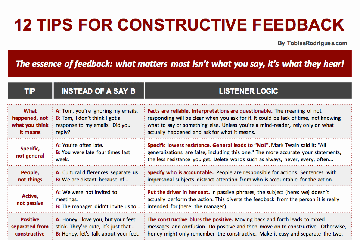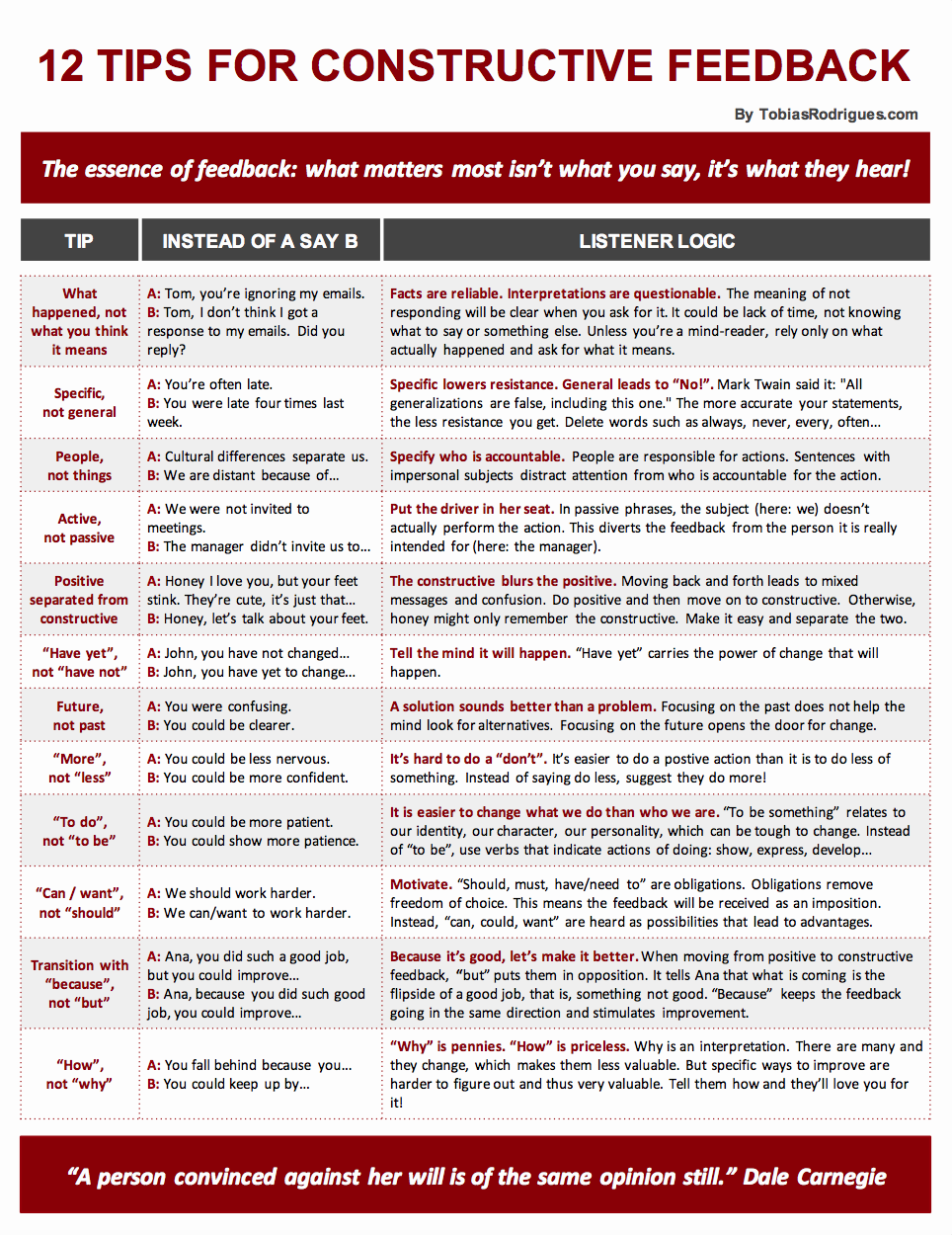Tag: Effectiveness
Six Rookie Mistakes When Leading Remote Teams


—
When there’s a sea storm, captains are called upon to reassure their crew, so that together they keep the ship safe enough to move in the right direction.
The Coronavirus storm has forced teams — without warning and without delay — to work from home in improvised office spaces, fighting to focus on work while juggling several other responsibilities and concerns at the same time.
If remote working poses a challenge in and of itself, all the more so in crisis conditions, where uncertainty and confusion make the load all the heavier.
Since 2011, I’ve been helping organizations — in good and bad times — build teams, many of which with some or all their members working remotely, often in different time zones.
Here are six mistakes you want to avoid (and six recommendations) when leading teams remotely, especially in crisis conditions.
—
Mistake #1: Believe it is (almost) business as usual
—
A new paradigm is emerging, as tends to happen in crisis. And with it, new challenges are thrown at your team. It would be a mistake not to stop and fully appreciate the nature of the challenges you and your team are now facing.
It’s a mistake to think this is only about keeping things going a bit longer before it’s over. It’s a new problem. Face it with your team.
—
RECOMMENDATION: Do a diagnosis
Imagine you are Dr. House. If the challenge you now face is an illness, what would you call it?
—
Mistake #2: To execute without a roadmap
—
In a crisis it is easy for teams to get disoriented, especially if they are forced in a rush to work remotely. You might have a sense of what comes next, but the team most likely has no f**king idea.
It is a mistake to ask teams to continue moving forward without a new road map that shows this is where we are, this is where we are going, and most importantly, this is why we’re going. I wonder what Nietzsche was thinking when he said: “He who has a why to live for can bear almost any how.” 😉
—
RECOMMENDATION: Give them context and relevance
Explain to the team how their work fits in the larger picture, and why their contribution really matters.
—
Mistake #3: Fail to clarify new expectations
—
New problems require new behaviours. It it especially important that we define deliverables and ownership so that everyone knows who does what and who is responsible for making sure it gets done.
—
RECOMMENDATION: Tell them what they CAN’T screw up
New problems require exploration, which can lead to failure. It is crucial you specify what bits you expect the team to do absolutely right, the bits where failure is not an option.
—
Mistake #4: Make it a one-way road
—
If feedback is important, now it is more than ever. It’s a rookie’s mistake to fail to create NEW channels for feedback. Unless you ask, you will not know the struggles and suggestions your team has.
—
RECOMMENDATION: Tell them it’s NOT ok to stay stuck and silent
Send out questions before meetings, and ask everyone to come prepared to share.
—
Mistake #5: Neglect positive feedback
—
Humans need feedback to grow, which makes giving feedback the gift of growth: constructive feedback gives us the path for growth, and positive feedback gives us the energy to grow.
In times of crisis, teams need tons of positive feedback — the energy — to get through challenges. Forgetting to give positive feedback is a silly mistake.
—
RECOMMENDATION: Double down on positive feedback
Give twice as much positive feedback and show twice as much appreciation. Start with positive feedback. End with positive feedback. Transition with positive feedback. And ask the whole team to give… POSITIVE FEEDBACK.
—
Mistake #6: Undervalue repetition
—
The Romans believed that “repetitio est mater studiorum”, that repetition is the mother of learning. When working remotely, technical issues can make getting information across difficult.
Moreover, when remote work is being improvised moment by moment and under great uncertainty, tension is generated, which makes getting information across even more difficult.
Hence the need to repeat, repeat, repeat.
—
RECOMMENDATION: Sound like a broken record
Say it at the beginning. Repeat in the middle. Ask them to say it. And say again at the end.
12 Tips For Constructive Feedback

Whether a direct report, a manager, a colleague, a friend or a partner, giving constructive feedback is a crucial element of our relationships.
.
How you give feedback
determines how it is received.
I moderate constructive feedback sessions for teams and their leaders, and some patterns prove to be more effective than others. Here’s a set of keys that unlock the doors for constructive feedback to be well received.
Download and discuss them with those you give feedback to.
What matters most
isn’t what you say, it’s what they hear.
So by all means, I’d love to hear your constructive feedback.
How Odie Helps You Design Awesome Workshops!

The other day my friend and colleague Evgueni Talal, a specialist in customer satisfaction, asked for feedback on a workshop he’s preparing for the Toastmasters Fall District Conference in Lyon.
This got me thinking about what makes workshops awesome. I noticed four recurring elements that make workshops memorable experiences. Remember Odie from Garfield? These are the ODIE elements of awesome workshops.
- Original: How will the content be MINE?
When I began creating my conflict resolution seminars, I asked my friend and colleague, Florian Mueck, a public speaking and charismatic communication expert, for advice. Halfway through my first sentence, he said: “Stop! Don’t talk about someone else’s stuff. Present your own material.”
“Original” answers the question: What does the workshop offer that is uniquely mine that participants can get nowhere else? Evgueni has decided on something unique, to say the least. I won’t ruin the surprise, but be prepared to dance!!
This element avoids making the workshop merely a loudspeaker for other people’s material. Think about it: Why would someone want go to a workshop to listen to you talk about someone else’s ideas?
But how can we be original when some of the material is not ours? Only you own the experience of the content. Share your personal experience and add value by making connections we haven’t heard of. What does networking have to do with dancing? I have no idea. Ask Evgueni!!
- Doable: How will lives change?
The high applicability of the workshop to real life situations is crucial. “Doable” answers the questions: What will participants be capable of DOING when the workshop is over? What are the specific outcomes they can count on?
The answer to these questions begins with: By the end of the workshop participants will be able to do 1… 2… and 3… Once you’ve got the answers to this, design your workshop to make it happen.
What we avoid here are merely reflexive workshops that make us think about cool stuff but don’t equip us with the tools to change specific situations in our lives.
- Interactive: How will they share the stage?
Workshops where the participants are the stars are always successful workshops. The interactive element answers the question: What exercises and activities will I include to involve the participants?
What we avoid here are passive workshops, where participants receive but do not give. Awesome workshops invite participants to share their knowledge and skills. This is what makes it a workshop instead of a lecture or a speech.
- Entertaining: How will they be fully engaged?
No one wants to deliver boring workshops. But some people do. Inspiring others with our enthusiasm is the name of the game. It’s the greatest challenge we face.
Here are a few tips to make workshops more entertaining: tell stories, provide a form-like-handout with questions and blank slots to be filled throughout the workshop, and use examples that relate directly to your participants’ struggles.
Thank you Evgueni, for inspiring the topic for this post! Thank you Odie, for making the elements unforgettable: Original, Doable, Interactive and Entertaining!
A Lesson From Tough Times


Think of someone who causes a sense of admiration when you recall the tough stuff they’ve been through and still managed to keep it together. How did they do it?
Lao Tzu said that the person who conquers others is strong while the person who conquers him/herself is mighty. How do you do that? Is there a formula?
It is precisely the extreme events of our life
that show us the essence of growth.
My personal experience of “intense” change includes moving unexpectedly at the age of 13 from Canada to a tiny Island of Portugal; losing quite a bit of weight (25 kg/55 lbs), and a career change.
More importantly, I’ve seen others go through much tougher events, such as an unjustly large jail sentence, the shaking news of a terminal illness, the untimely death of a son or the raw suicide of a sibling.
What does it take for us to change or overcome imposed change? In all these situations, I’ve noticed two defining forces that allow us to effect change or to overcome imposed change: pain and pleasure. I call them “The Curves of Change”.
The curves apply both to a desired change we wish to implement or an imposed change we wish to overcome.
Pleasure makes change desirable.
Pleasure is an attracting force: it pulls us to change. When faced with a situation to overcome, visualizing the pleasures that we will receive creates the desire to change.
For ex., when my family and I moved, the desire to make friends impelled me to quickly improve my Portuguese. When I lost weight, the idea of being slimmer made me want to exercise. When I changed career, the hope of more freedom fueled me to complete another master’s.
When we want to change, the first step is to visualize the pleasures that will be obtained as a result of changing. This provides the motivation to take action.
Pain makes change inevitable.
Pain is a repelling force: it pushes us to change. Pain is more effective than pleasure. Often there’s a taunting voice in our head: “It’s too hard. It’s not worth it. Not now.”
The efforts involved in changing can sway us to give up and settle for the way things are. The solution to reducing the pain involved in changing is to emphasize the pain involved in not changing!!
The solution to overcoming
great pain is a greater one.
For ex., when we moved, feeling ridiculous when I talked helped me overcome the challenges of an unfamiliar language. As I lost weight, the idea of feeling tired again drove me to stick to months of strict dieting. When the uncertainties of a new career made me doubt, the thought of another month doing the same thing pushed me forward.
The second step is to reduce the pain involved in changing by emphasizing the pains of not changing. This eases the feeling of discomfort involved in changing and gives us the stamina to endure.
Have no doubt, the road of change turns to lessen pain and curves to enhance pleasure. Be sure to look at it from this perspective. To successfully effect any change, engage in increasing pleasure and getting rid of pain!
What roles to pain and pleasure play in the curves of your change?
Grandpa Jose’s Effectiveness Recipe

My grandfather was born in the Azores Islands in 1906. His schooling literally lasted two days: the first and the day after. He got punished, didn’t like it, left and never went back.
Grandpa didn’t learn to read or write. Grandpa didn’t really know who Aristotle, Shakespeare or Karl Marx were. Grandpa didn’t rely on business trainings or performance enhancement models. Grandpa was a farmer.
One day, when he was but a young man, his dad gave him and his brother a gift: a pregnant young cow for the two to start their lives as herdsmen. Two years later, his brother owned two head of cattle; grandpa Jose, seven. From then on, his success kept multiplying, considerably.
This afforded him the opportunity to savor life, especially his passion for discovering the wonders of the world. In the end, grandpa grew to be quite the philosopher, readily armed with the precious pearls of common sense and practical wisdom.
The recipe of his effectiveness? He used say he remembered that often at the end of the day while he sat by the sunset reflecting, he’d notice his brother in the distance, still tilling the earth, persistently putting his back into every strike.
“Before the sun rose,” he used to say, “John would already be out on the field. And not before dark would he return! — All hard work and diligence. I did it differently. Every morning I’d ask myself: ‘What do I have planned for the day?’” Then he’d think:
How can I accomplish twice as much with half the effort?
Grandpa kept at it until he found an answer. Most of them eventually worked.
I gather an important lesson from my grandfather: To make it an undying habit to stop, rethink and improve. I’m sure he would be happy to know that Aristotle thought along similar lines: “We are what we repeatedly do. Excellence, therefore, is not an act but a habit.”
I must confess, though, I sometimes recognize a bit of great-uncle John in me. What about you: with whom do you most identify with?


